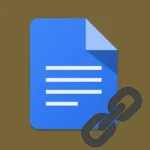Curious to know about the limitations of ChatGPT? Well, I want you to get ready because I’m going to spill the beans! ChatGPT, will all its marvels and wonders, also have its limitations.
I’ve already used and experimented with this AI language model many times, then I’ve come to recognize the boundaries it faces. In this blog post, I will be your guide as I shed light on the real limitations of ChatGPT.
Let’s get to it!
1. ChatGPT Lacks Contextual Understanding
I’m a big fan of AI and I have extensively interacted with ChatGPT that’s why I can confidently attest to one of its notable limitations, which is the lack of contextual understanding. Let’s break it down to better understand it.
Let’s you’re having a conversation with ChatGPT about a specific topic. Then you have provided some background information or asked questions related to a previous message.
However, ChatGPT struggles to retain and fully comprehend the context of the ongoing conversation. This means that it lacks the ability to remember past interactions within the same dialogue.
For example, there was a time that I asked ChatGPT about a particular movie. Later in the conversation, when I referred back to that movie and asked for some follow-up questions, ChatGPT seemed to have forgotten that we have talked about it earlier. It responded as if it had no prior knowledge of the movie’s details.
We are chatting with someone who has short-term memory loss, so at times this could feel fragmented and irritating. It is responding to each message independently without considering the largest context or the information shared earlier.
2. It doesn’t have the Ability to Access Real-time Information
This is the limitation of ChatGPT that is worth discussing because few users only know about this. ChatGPT doesn’t have the ability to access real-time information and I have noticed it many times already.
Yes, ChatGPT, is an extraordinary language model, it is also trained on a vast amount of data up until a certain cutoff date. This only means that this AI technology is limited to the information available at the time of its training.
As a result, when it comes to retrieving real-time information or providing up-to-minute data, ChatGPT falls short. For example, during my conversation with ChatGPT, I attempted to gather the latest stock market prices by asking questions like, “What is the current price of XYZ stock?”
Unfortunately, it could only provide information based on historical data it had been trained on. The AI chatbot was unable to give me the answer.
I also tried to ask ChatGPT about the weather outside, asking questions like, “What is the weather condition for today?” Again, it wasn’t able to provide me with the latest details.
Another reason why ChatGPT can’t access real-time information is that it operates in a standalone manner. It doesn’t have the ability to connect to the internet such as browsing websites.
3. ChatGPT has Limited Knowledge beyond the year 2021
The knowledge of ChatGPT is derived from a vast dataset accumulated up until its knowledge cutoff in September 2021. This means that this AI chatbot’s understanding of events, developments, and information is limited to what was available before that time.
I’ve seen many times that ChatGPT has lacked familiarity with recent advancements. The AI chatbot was also honest by saying that it has no knowledge after its cutoff date.
For example, when discussing technological advancements, I asked ChatGPT about the latest smartphones that are trending on the market. It was unable to respond with a response or information on the gadget, though.
This limitation can be likened to conversing with someone who has been isolated from the rapid pace of technological progress. It is indeed ironic that ChatGPT, being an advanced technology, is constrained by its limited knowledge beyond the year 2021.
It’s also worth noting that the efforts of the company, which is OpenAI, are already underway to improve the temporal limitations of language models like ChatGPT.
4. It does not possess human-level Common Sense
I know that ChatGPT has a remarkable ability because it is now being used by millions of people. But, it does not possess any human-level common sense.
Common sense refers to the practical knowledge and intuitive understanding that enable us to successfully navigate the environment. It’s the one who makes informed decisions based on our experiences.
In my interactions with ChatGPT, this AI was smart, but I have noticed instances where it struggles to comprehend the nuances of everyday situations or provide responses that align with human intuition.
For example, I had a conversation with ChatGPT about practical reasoning such as resolving a household problem or providing advice on social situations. I’ve seen that ChatGPT has generated responses that lack the depth and nuanced understanding that a human would possess.
This limitation becomes evident when this AI technology is confronted with ambiguous or contextually complex queries. As of this writing, it may not possess the holistic understanding and logical reasoning that humans naturally employ.
5. ChatGPT may not fully Comprehend Emotional Cues
There are times, that when we talk to our friends or family, we can tell how they’re feeling just by the way they talk or the words they use. But with ChatGPT, it’s not easy because it may not fully comprehend emotional cues.
See, ChatGPT is a very smart computer that can understand a lot of words and give answers based on what it knows. But it doesn’t have the ability how to pick up on emotions as humans do. It can’t tell if you’re happy, sad, excited, or mad just by reading your words.
I tried to communicate with ChatGPT and I shared my life experiences, but the AI chatbot didn’t quite get it. It would just give me answers that made sense but it didn’t really understand the emotions behind my words.
So, if you’re feeling down and you need someone to understand your emotions, ChatGPT may not be the best choice. It’s not great at understanding how we feel and I suggest you look for someone to talk to. That’s something we humans are really good at!
6. It has Vulnerability to Adversarial Inputs
Now, we have the next limitation of ChatGPT which is not so good at dealing with tricky inputs. I’ve seen a lot of people trying to trick ChatGPT by giving it wrong or confusing information on purposes. This is called adversarial input, and it can be a problem.
I’ve done this a lot of times and I can say that this AI chatbot can be fooled by tricky questions or statements. Other users might try to make it say things that aren’t true or make it give weird answers. It’s like a game for them to see if they can confuse the program.
One time, I gave ChatGPT a riddle that had a tricky answer. As a human, I already knew the answer. But, I wanted to see if ChatGPT can guess the correct answer.
I eagerly waited for the response of ChatGPT because it took the AI chatbot a lot of time. To my surprise, ChatGPT gave me a completely off-the-wall answer.
But, let me tell you that if there is one limitation of ChatGPT that will be improved as soon as possible, it will be this one. I know that they are doing adversarial training so that their AI models are exposed to carefully crafted adversarial examples during the training process.
As technology continues to advance, addressing this vulnerability is a priority to enhance the reliability and trustworthiness of AI systems like ChatGPT.
7. ChatGPT’s Inability to ask Clarifying Questions
Do you know what’s the big problem with ChatGPT? It doesn’t know how to ask clarifying questions just to make things clearer! You’re really like communicating with a robot who doesn’t understand when things get confusing.
Let’s say you want to ask ChatGPT, “What’s the best restaurant?” But you didn’t mention any city or which type of food you’re looking for.
Then ChatGPT will not ask, “Which city or what kind of food are you interested in?” It will just spit out some answers and tries its best to guess what you mean based on what it knows.
In real life, when we don’t understand something, what we usually do is ask questions to get more details. We might say, “Could you explain that again?” or “Can you give me an example?”
When we are asking questions, it helps us understand better and make sure we give the right answer of information.
But with ChatGPT, it’s different. It won’t ask a question to clarify things. So, sometimes, it will just spit out an answer that doesn’t make sense or isn’t what you expect. It’s like trying to solve a puzzle without all the pieces.
The people behind ChatGPT are working hard to improve this AI chatbot. They want to teach it how to ask clarifying questions when it needs more information. It is like what we do in real conversations.
8. It does not Understand or Respond to All Languages Equally
When I explored the capabilities of ChatGPT, I also noticed that it does not understand or respond to all languages equally.
I believe that this AI chatbot is trained on a vast amount of data from the internet. This means that includes text in multiple languages. I can say that ChatGPT can handle and generate text in various languages. But, its proficiency and accuracy may differ across different language domains.
From my experience, I’ve noticed that ChatGPT tends to perform better in languages that have a significant amount of training data available. Let’s say the English language, it generally exhibits a higher value of fluency and comprehension.
However, for less commonly spoken languages or languages with limited training data, its performance may be less reliable.
For example, I once tried to engage with ChatGPT using a less common language that I’m familiar with. It was able to generate some responses but they were often less coherent and seemed to lack fluency.
I can say that the language model’s performance will be compromised if there is limited or insufficient data available in a specific language. It will lead to a less accurate understanding and generation of text.
9. ChatGPT struggles to perform Multiple Tasks at a time
Have you ever tried to attempt too many tasks simultaneously? Well, it can really be tough and ChatGPT also faces a similar challenge. The last limitation that I saw with ChatGPT is it struggles to perform multiple tasks at a time.
Imagine you’re playing soccer and you’re the only player on your team. You have to defend the goal and try to score all by yourself. It’s super hard because you can’t focus on everything at once.
Well, ChatGPT is like that too. I know it’s a smart language model that can understand and generate text. However, it might become a little daunting when juggling several jobs at once. I even noticed that the website gets slow when the chatbot is doing many tasks.
In everyday life, trying to multitask often results in us losing focus. We can’t be able to give our full focus to each task. It’s similar to ChatGPT. Its performance will suffer when you ask it to perform different tasks simultaneously.
Final Thoughts
Even though ChatGPT has limitations, it’s important to remember that every new technology starts with some challenges.
Like when we first learned to ride a bike, it took a few falls before we mastered it. But what matters most is that we keep trying and improving.
OpenAI, the amazing company behind ChatGPT, is doing its best to improve this AI chatbot. I see them as superheroes of the tech world because they are always working hard to enhance the capabilities of ChatGPT and address its limitations.
Developing ChatGPT is like building a sandcastle on the beach. Sometimes, it’s not perfect the first time, Then a wave will come and knock it down. But you don’t give up! What you do is gather more sand, make adjustments, and build an even stronger castle.










